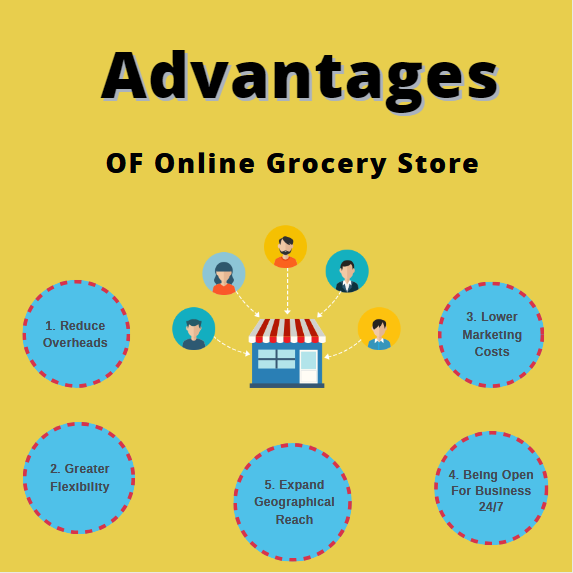The Significance of User Experience in Ecommerce Success
The Significance of User Experience in Ecommerce Success
Blog Article
A Comprehensive Guide to Why This Pattern Is Improving Customer Actions and the Diverse Products That Are Changing Hands Online
In today's quickly progressing industry, the merging of customization, sustainability, and technological innovation is significantly changing customer habits. As more youthful generations significantly focus on moral factors to consider and tailor-made experiences, brands are adapting their techniques to satisfy these expectations. This improvement is not just a short lived trend but a profound shift that is influencing the types of products traded in the electronic realm. Comprehending the underlying variables driving this change is important for companies aiming to flourish in this new environment, prompting a better exam of the effects for both customers and brand names alike.
Key Factors Driving Adjustment
Significantly, consumer actions is being shaped by an assemblage of key variables that drive substantial adjustment in the marketplace. Among the most essential influences is the fast advancement of innovation, which has actually transformed just how consumers gain access to information and make getting decisions (Ecommerce). The expansion of smart devices and social media systems permits consumers to take part in real-time communications, leading to more enlightened options and heightened expectations for personalization
In addition, demographic shifts, including the surge of millennials and Generation Z, are redefining market characteristics. These generations prioritize experiences over material products and look for brand names that align with their values, such as transparency and credibility. This change compels companies to adjust their approaches to reverberate with these conscious consumers.
Additionally, the effect of globalization can not be ignored. With the ability to shop throughout borders, customers are exposed to a broader selection of items and brand names, fostering a competitive atmosphere where high quality and consumer solution come to be extremely important. With each other, these variables develop a complex landscape that forces businesses to be agile in their approach, guaranteeing they fulfill the evolving needs of a varied and enlightened customer base.
The Increase of Sustainable Products
How can brands effectively react to the expanding consumer need for lasting products? To navigate this shift in customer actions, brands should prioritize openness and credibility in their sustainability efforts. This involves offering clear info regarding sourcing, manufacturing procedures, and the total lifecycle of products. Brands can utilize qualifications, such as Fair Profession or organic tags, to develop count on and reliability with eco-conscious consumers.
Additionally, development in item style and materials is crucial. Business are increasingly taking on naturally degradable, recycled, or upcycled materials to minimize environmental influence. This not only interest consumers' choices but additionally positions brands as leaders in sustainability.
Involving in area initiatives and sustaining environmental reasons can further improve brand name loyalty. Customers are more likely to support brands that proactively contribute to sustainability initiatives and demonstrate social obligation.

Customization in Shopping Experiences
Customization has ended up being a pivotal aspect in enhancing buying experiences, as customers progressively look for tailored communications that resonate with their private choices. This shift is driven by the growing assumption for brands to comprehend and deal with distinct client demands, which has caused ingenious techniques in retail.
Shopping platforms currently employ innovative formulas that evaluate searching background, acquisition behavior, and market information to curate tailored product recommendations. These tailored experiences not just raise user engagement however likewise foster brand name commitment, as consumers are most likely to return to systems that provide relevant tips.
In addition, personalization extends beyond product recommendations; it includes targeted advertising methods, tailored e-mail campaigns, and this website personalized web experiences. Brand names that harness the power of data analytics can create an extra seamless and satisfying buying experience. For instance, vibrant prices designs and customized discount rates can substantially improve client fulfillment, as they show an understanding of private acquiring actions.
Eventually, the emphasis on personalization in purchasing experiences stands for a fundamental shift in customer habits. As brands remain to adjust to these developing expectations, the capacity to supply individualized interactions will certainly be vital for preserving competitive benefit in the retail landscape.
Effect of Social Media Trends
The rise of customization in buying experiences has been substantially influenced by social media sites patterns, as platforms come to be central to customer interaction and brand name communication. Social media makes it possible for brand names to gather substantial data concerning consumer choices, behaviors, and communications, which informs tailored advertising approaches (Ecommerce). This data-driven method permits companies to customize their offerings, enhancing consumer complete satisfaction and commitment

Social network additionally fosters neighborhood amongst consumers, motivating conversations around products and brand names. This feeling of belonging influences buying choices, as consumers are more probable to get items endorsed by their peers or neighborhoods. In addition, user-generated content, such as evaluations and endorsements shared on social platforms, substantially influences brand understanding and depend on.
The Future of Online Consumer Behavior
What will the future hold for on the internet customer habits as modern technology continues to develop? Progressively, customers are anticipated to focus on customization and convenience in their online shopping experiences. As expert system and artificial intelligence technologies advance, sellers will harness data analytics to create tailored shopping experiences, anticipating consumer needs and preferences more accurately than in the past.
Furthermore, the rise of immersive technologies, such as augmented fact (AR) and digital fact (VIRTUAL REALITY), will certainly redefine item interaction. Consumers will certainly be able to imagine products in their own settings prior to purchasing, therefore decreasing uncertainty and Going Here boosting complete satisfaction.
Sustainability will additionally play a critical duty in forming future consumer behavior. As awareness of ecological problems grows, customers are most likely to favor brand names that demonstrate commitment to lasting methods, influencing purchasing choices and brand commitment.
In addition, the combination of voice commerce and clever home gadgets will enhance the acquiring process, making deals much more accessible. In this progressing landscape, companies should adapt to these changes, concentrating on technology and customer involvement to stay competitive (Ecommerce). The future of online consumer habits assures to be vibrant, driven by technological advancements and altering consumer values

Conclusion
The recurring transformation in customer habits is considerably influenced by the merging of personalization, sustainability, and technical improvements. As brands adjust to meet the needs of millennials and Gen Z, the emphasis on customized experiences and ethical sourcing comes to be progressively pronounced. The assimilation of social networks better magnifies these changes, cultivating community involvement and shaping buying choices. As a result, the advancement of the on the internet this industry continues to show these shifting dynamics, proclaiming a new age for customer interactions and item offerings.
Report this page